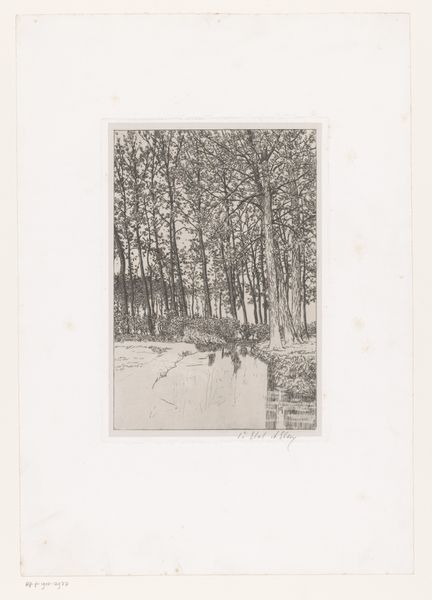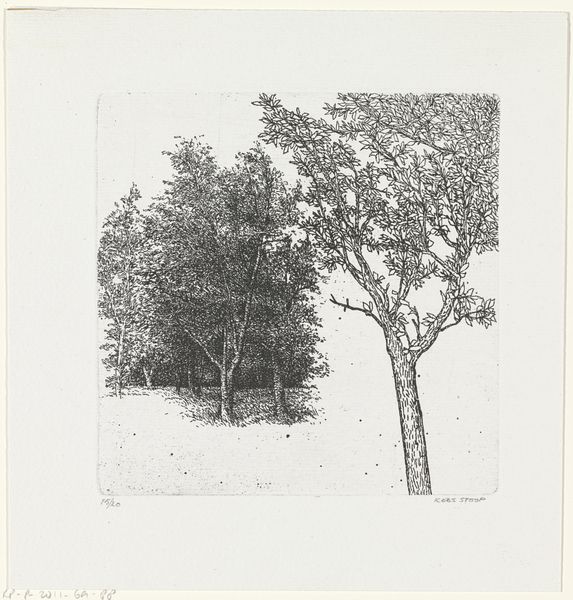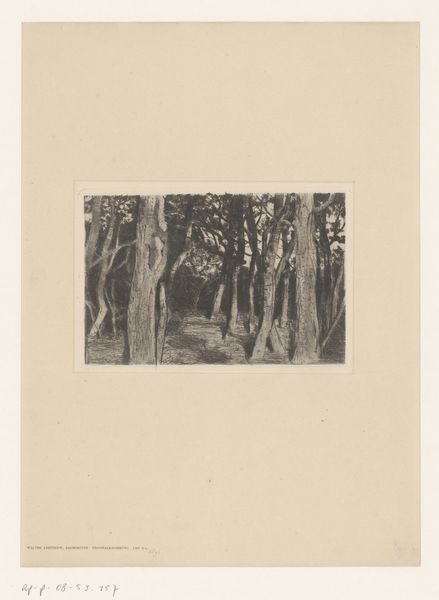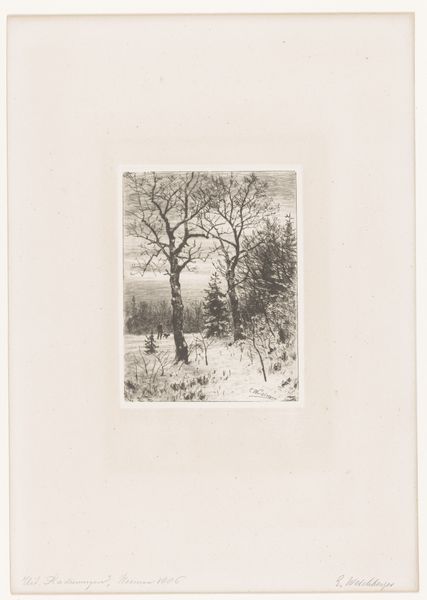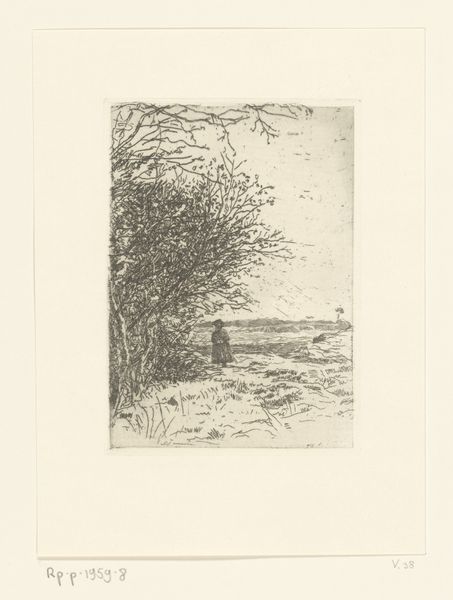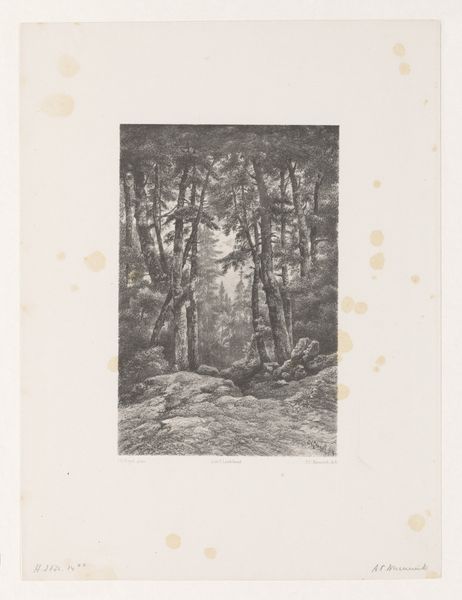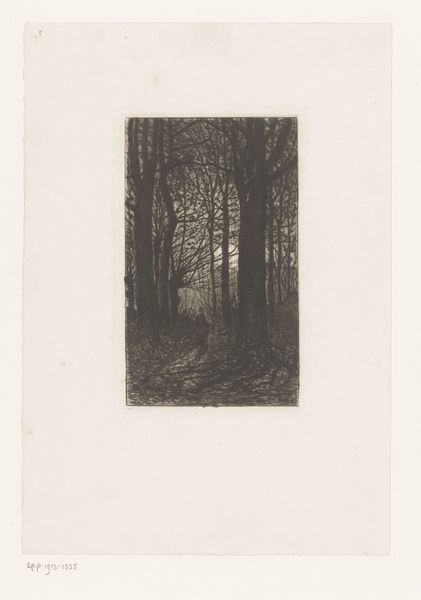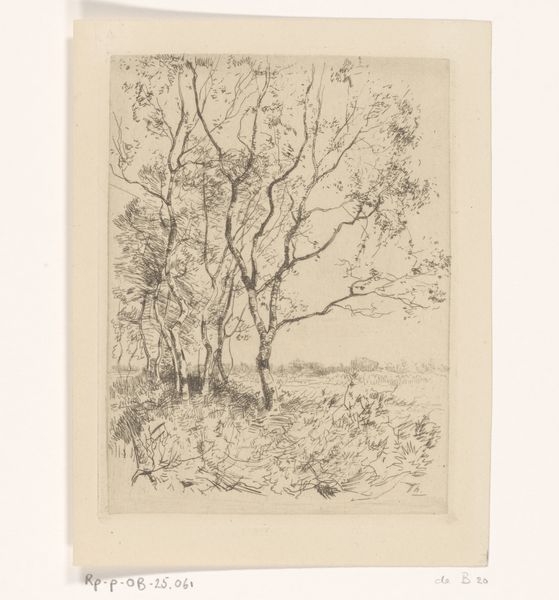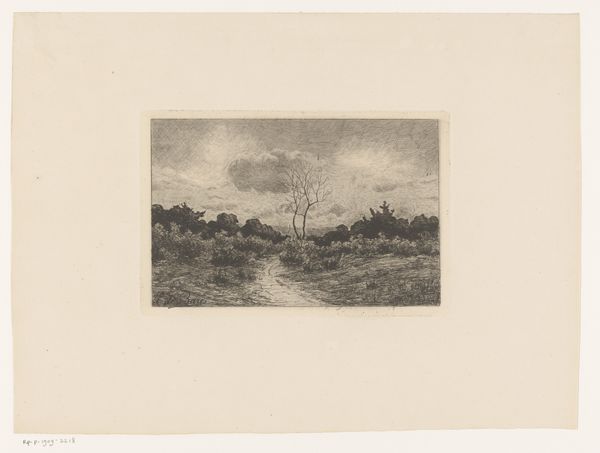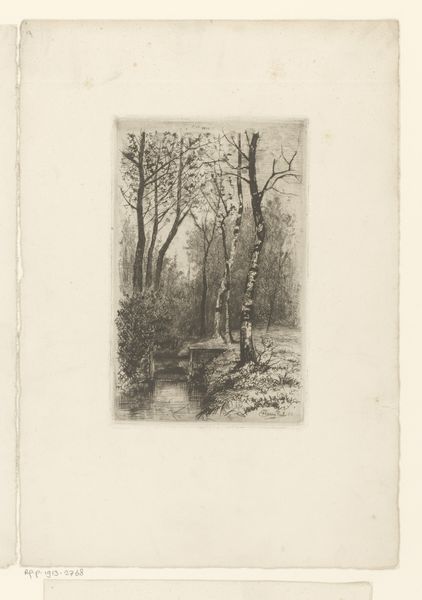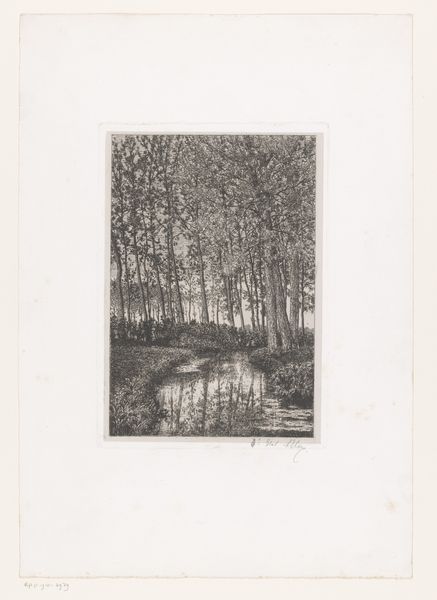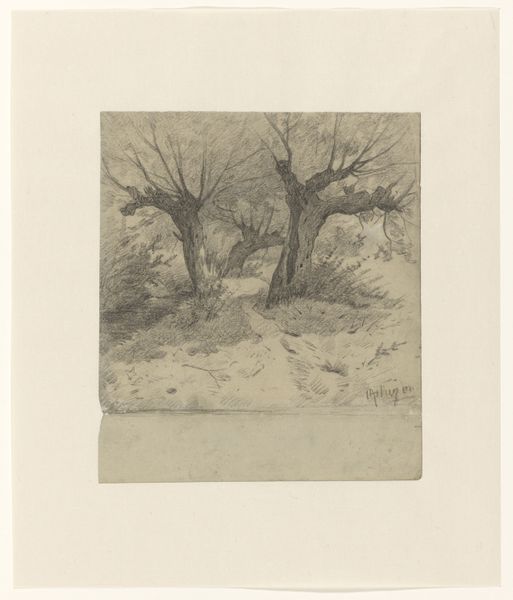
print, etching
#
tree
# print
#
etching
#
old engraving style
#
landscape
#
figuration
#
line
Dimensions: height 170 mm, width 110 mm
Copyright: Rijks Museum: Open Domain
Curator: Let's dive into "Kale boomtakken," or "Bare Tree Branches," an etching created by Bengt Bolin in 1959. Editor: What an intricate print. I am really struck by how Bolin created this sense of depth and the barrenness, it is somber, with so many delicate lines. As a historian, what strikes you most about this work? Curator: Considering the post-war period, and Bolin’s identity as a Swedish artist, this print embodies a certain Scandinavian sensibility. The landscape as a motif became heavily politicized, carrying notions of national identity. We might ask, does Bolin engage in that romanticism or perhaps offer a critique through its starkness? How do the 'bare branches' resonate in a society rebuilding itself? Editor: So, the print might be commenting on a specific moment in time? Curator: Exactly! How does the medium of printmaking itself contribute to this dialogue? Etchings allowed for wider distribution. What statement might Bolin be making by creating a potentially democratic artwork depicting a very specific landscape? Who would be the consumers? Editor: That’s a perspective I hadn't considered! I was focusing on the art and design, now it brings into focus a wide variety of sociopolitical concerns and artistic expression and choices. Curator: Yes, thinking about accessibility is vital, especially when viewing art with seemingly simple imagery. Editor: It makes me see that it’s more than just an image of bare trees. I am now much more aware of the print and of what messages were being sent. Thanks for your insights!
Comments
No comments
Be the first to comment and join the conversation on the ultimate creative platform.
